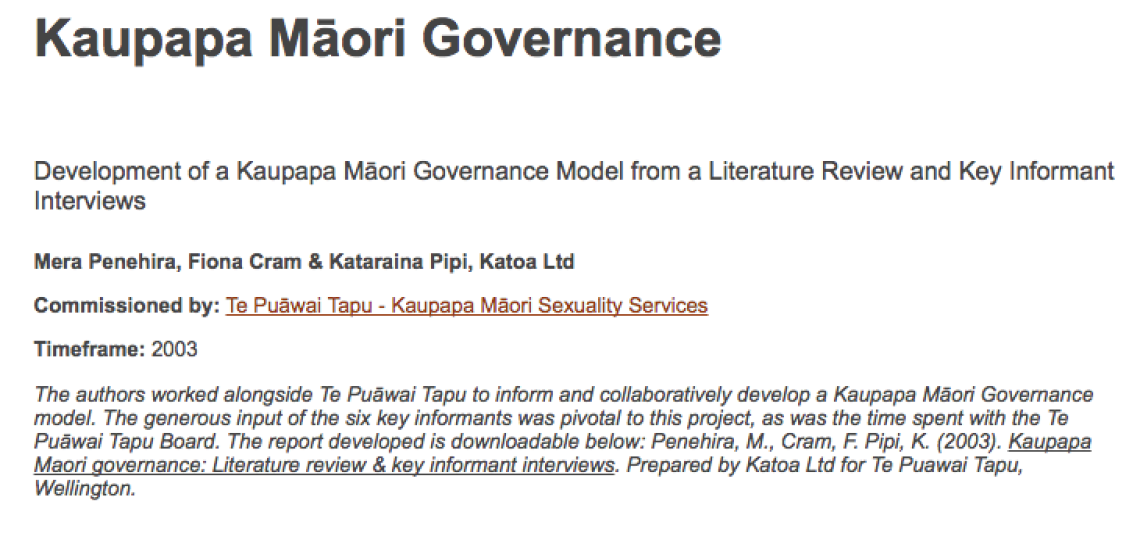Kaupapa MÄori sets the theoretical framework within which ideas and research about governance were explored. This review incorporated both indigenous and non-indigenous governance literature. This set the scene for interviews with six key informants with MÄori who are knowledgeable about implementing Kaupapa MÄori governance within MÄori and Iwi (tribal) organisations. A Kaupapa MÄori governance model for Te PuÄwai Tapu was then developed.
Governance is written about and theorised within global, national, and local; societal and institutational contexts. There is a tendency to confuse governance with government and to use the two terms interchangeably when government is being discussed (Plumptre & Graham, 1999). However, government is an institution and governance is a process. There are many definitions of governance but fundamentally it is about influence, decision-making and accountability. Louise Frechette (1999), Deputy-Secretary-General of the United Nations, gives the following useful perspective: ‘Governance is the process through which… institutions, businesses and citizens’ groups articulate their interest, exercise their rights and obligations and mediate their differences’.
The role of self-determination is essential to the development of good governance models for indigenous peoples. Self-determination provides indigenous peoples with the opportunity to contemplate the appropriate mix of traditional and contemporary elements. For example, Alfred Taiaiake (1999) argues that the election of Board members should be foregone in favour of traditional decision-making processes. In this contemplation, the Nunavat example demonstrates the importance of the voice of the people. As Reinharz (1988, p.15) argues, ‘…if you want to hear it, you have to go to hear it, in their space, in a safe space…’. Through consultation, governance models can be established to take people into the future, to help heal the past, and to reconnect governing processes with indigenous values, beliefs and aspirations.
Indeed, it might be speculated that the new horizons for ‘western’ models of good governance lie in Indigenous knowledge and practice. This is perhaps best summarised in the following statement from Bradley Young (2002), of the Student Council of the University of Alberta:
The motivation for Aboriginal ‘self-government is (equally) simple: self preservation … Aboriginal governance is the fulfillment of many prophecies which many elders from many different nations share. ...Aboriginal People, will increasingly vacate the old dysfunctional colonial institutions in sway now, replacing them with renewed indigenous governance systems which will revolutionize and save the tired, increasingly ignored, and decaying 'modern' western democratic models of government, as well as their own people(s) from oblivion.
The model of Kaupapa MÄori governance proposed in this project is a combination of Kaupapa MÄori principles and critical practice Issues identified in the literature review and from key informant interviews. A three-part model reflects the categories of governance essential to a Kaupapa MÄori way of being.
Additional Information
Penehira, Mera, Fiona Cram & Kataraina Pipi, Katoa Ltd. Development of a Kaupapa MÄori Governance Model from a Literature Review and Key Informant Interviews. Prepared by Katoa Ltd for Te Puawai Tapu, Wellington. New Zealand. 2003. Paper. (http://www.katoa.net.nz/past-projects/kaupapa-maori-governance, accessed May 26, 2015)

